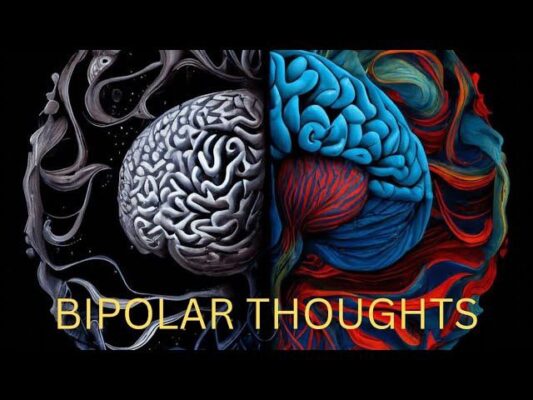Understanding the Bipolar Spectrum
Bipolar disorder, also known as manic-depressive illness, is a mental health condition that affects millions of people worldwide. Characterized by extreme mood swings, ranging from depressive lows to manic highs, bipolar disorder can have a significant impact on an individual’s daily life. In this article, we will delve into the complexities of the bipolar spectrum, exploring its causes, symptoms, and treatment options.
What is the Bipolar Spectrum?
The bipolar spectrum refers to a range of mood disorders that fall under the umbrella of bipolar disorder. The term “spectrum” is used to describe the varying degrees of severity and expression of the condition. At one end of the spectrum lies bipolar disorder type I (BD-I), characterized by episodes of mania and major depressive episodes. At the other end lies bipolar disorder type II (BD-II), which is characterized by episodes of hypomania and major depressive episodes. In between these two extremes lies a range of conditions, including cyclothymic disorder, bipolar disorder not otherwise specified (NOS), and other subtypes.
Causes of Bipolar Disorder
While the exact causes of bipolar disorder are still not fully understood, research suggests that a combination of genetic, environmental, and neurobiological factors contribute to its development. Genetic predisposition is thought to play a significant role, with studies suggesting that individuals with a family history of bipolar disorder are more likely to develop the condition. Environmental factors, such as stress, trauma, and social isolation, may also trigger or exacerbate symptoms.
Symptoms of Bipolar Disorder
The symptoms of bipolar disorder can vary widely from person to person, but generally include:
Manic episodes: periods of elevated mood, energy, and activity level, often accompanied by impulsive behavior.
Hypomanic episodes: periods of elevated mood and energy, but without the severity and impairment seen in manic episodes.
Depressive episodes: periods of low mood, loss of interest in activities, and changes in appetite and sleep patterns.
Mixed episodes: periods of both manic and depressive symptoms occurring simultaneously.
Treatment Options for Bipolar Disorder
Treatment for bipolar disorder typically involves a combination of medications and therapy. Medications such as mood stabilizers (lithium), antipsychotics (quetiapine), and antidepressants (fluoxetine) are commonly used to manage symptoms. Therapy options include cognitive-behavioral therapy (CBT), interpersonal therapy (IPT), and psychoeducation.
Living with Bipolar Disorder
Living with bipolar disorder can be challenging, but with the right treatment and support, individuals can manage their symptoms and lead fulfilling lives. Key strategies for managing the condition include:
– Sticking to treatment: maintaining regular medication regimens and attending therapy sessions.
– Practicing self-care: engaging in activities that promote relaxation and stress reduction, such as exercise, meditation, and yoga.
– Seeking social support: connecting with friends, family, and support groups.
– Maintaining a healthy lifestyle: getting regular sleep, eating a balanced diet, and engaging in regular exercise.
Conclusion
Bipolar disorder is a complex condition that affects millions of people worldwide. Understanding the bipolar spectrum requires a comprehensive approach that takes into account its various forms and expressions. By recognizing the causes, symptoms, and treatment options for bipolar disorder, individuals can better manage their symptoms and lead fulfilling lives.
References
Bipolar Disorder – National Institute of Mental Health (NIMH) (nih.gov)
Bipolar Disorder – StatPearls – NCBI Bookshelf (nih.gov)
Websites:
Britmed Healthcare: https://britmedhealthcare.co.uk/
Nightingale Hospital: https://www.nightingalehospital.co.uk/
Top Doctors: https://www.topdoctors.co.uk/doctor/ahmed-el-missiry
You can also book, Contact us on WhatsApp 08009708017




